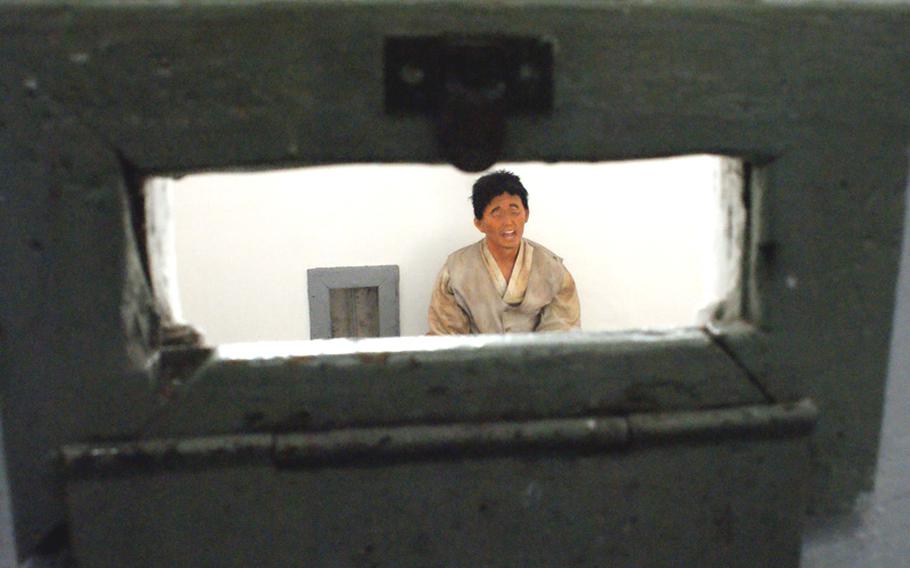Living
Behind bars by choice in South Korea
Stars and Stripes January 27, 2011

Korean prisoners endured pain, suffering and torture during their incarceration at the Seodaemun Prison. The Japanese used the prison to oppress Korean patriotic fighters who fought against the Japanese invasion. (Alfredo Jimenez/Stars and Stripes)
It's a concept understood by the thousands of foreigners each year who visit the Seodaemun History Hall, a former prison in South Korea that was run by Japanese to oppress, torture and murder Korean patriots during Japan's occupation.
The prison, which could hold up to 500 people, was run by the Japanese until the occupation ended in 1945. The prison was later used by the South Korean government until 1987.
Seven of the original 15 buildings remain intact at the site, which was dedicated as a shrine to its inmates in 1992. Of the 40,000 who passed through the facility, 400 died or were killed.
Visitors can tour three floors of exhibits, including recreations of torture scenes, photographs and video footage.
Unfortunately there is little explanation in English, but many of the scenes speak for themselves. Among the exhibits are prisoners' diaries and a warden's sword used to frighten incoming prisoners.
The National Resistance Room upstairs is another interesting area where, as the name suggests, one can learn details about the Korean resistance against Japanese rule. The most moving spot is a room that displays thousands of black and white photographs of prisoners.
Located in the basement of the building are the underground cells used for interrogation and detention. The prison barracks - small cells with no latrine -; can be found outside. Tourists are able to step inside the cells.
Also outside is a an execution cabin, which is sealed off to the public, and the main execution building, where cameras are not allowed.
Finally, near the exit of the compound, visitors can see an underground cell used by the Japanese to torture and kill female prisoners. There the story of activist Ryu Gwan-sun, a student from Ewha Womens University's high school in Seoul, is told.
The museum effectively teaches visitors about the prison's place in Korean and Japanese history. It is a fitting memorial to those who endured their time in the prison in the name of patriotism.
If you go:
Hours: March to October, 9:30 a.m. to 6 p.m., November to February, 9:30 a.m. to 5 p.m.
Admission: Adults, 1,500 won, Youth, 1,000 won, Children, 500 won (under 6 free).